

|
 |
Clash AKA Eshtebak (Blu-ray)
[Blu-ray]
Blu-ray B - United Kingdom - Arrow Films Review written by and copyright: Paul Lewis (11th August 2017). |
|
The Film
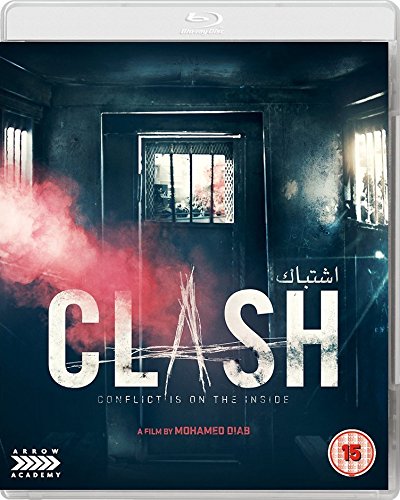 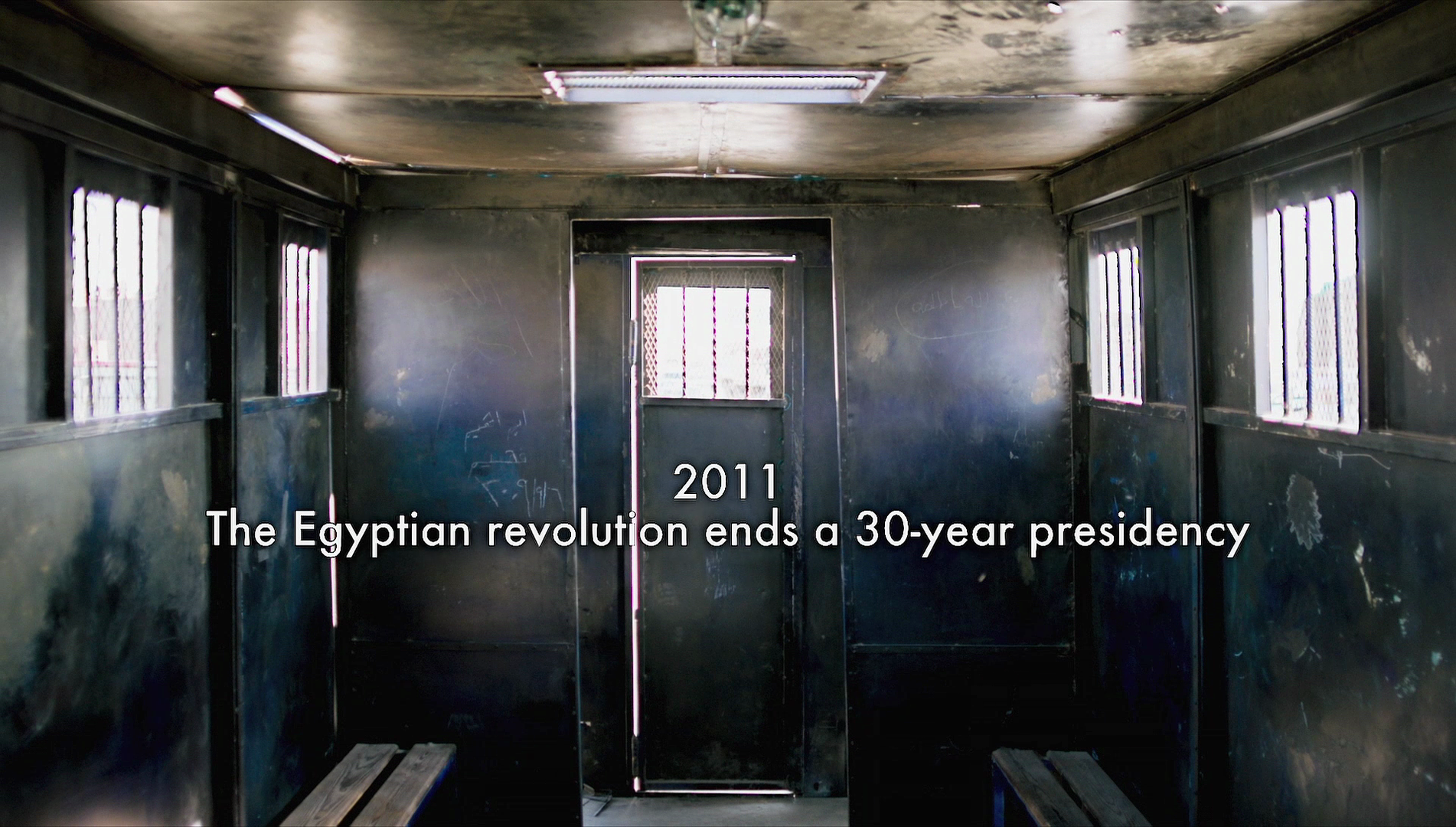 Clash (Mohamed Diab, 2016) Clash (Mohamed Diab, 2016)
Set in 2013, during the military coup in Egypt which ousted Islamist President Mohamed Morsi and replaced him with General Abdel-Fattah el-Sisis, Clash takes place entirely in a police van in which a group of pro-military protestors and members of the Muslim Brotherhood are held pending transportation to a detainment facility with the space to accommodate them. Since the 2013 coup, Sisi’s tenure as President of Egypt has seen the country’s military forces hold increasing power and it has also resulted in an increased clampdown on dissident groups – in particular, the Muslim Brotherhood, supporters of Morsi. Along with hundreds of other Morsi supporters, 529 members of the Muslim Brotherhood were sentenced to death in March 2014 in response to an attack upon a police station. Clash opens with a shot of the empty interior of the van, the camera positioned behind the driver’s cab facing towards the rear doors. The film outlines the historical context of the narrative briefly via a series of titles superimposed over this image: ‘2011 – The Eyptian revolution ends a 30 year presidency. 2012 – The newly-elected president is a member of an Islamist party, the Muslim Brotherhood (MB). 2013 – Millions revolt against the new president in the biggest protests in Egyptian history. Three days later, the military removes him. In the next days, Muslim Brotherhood (MB) and military supporters clash all over Egypt. This is one such day’. 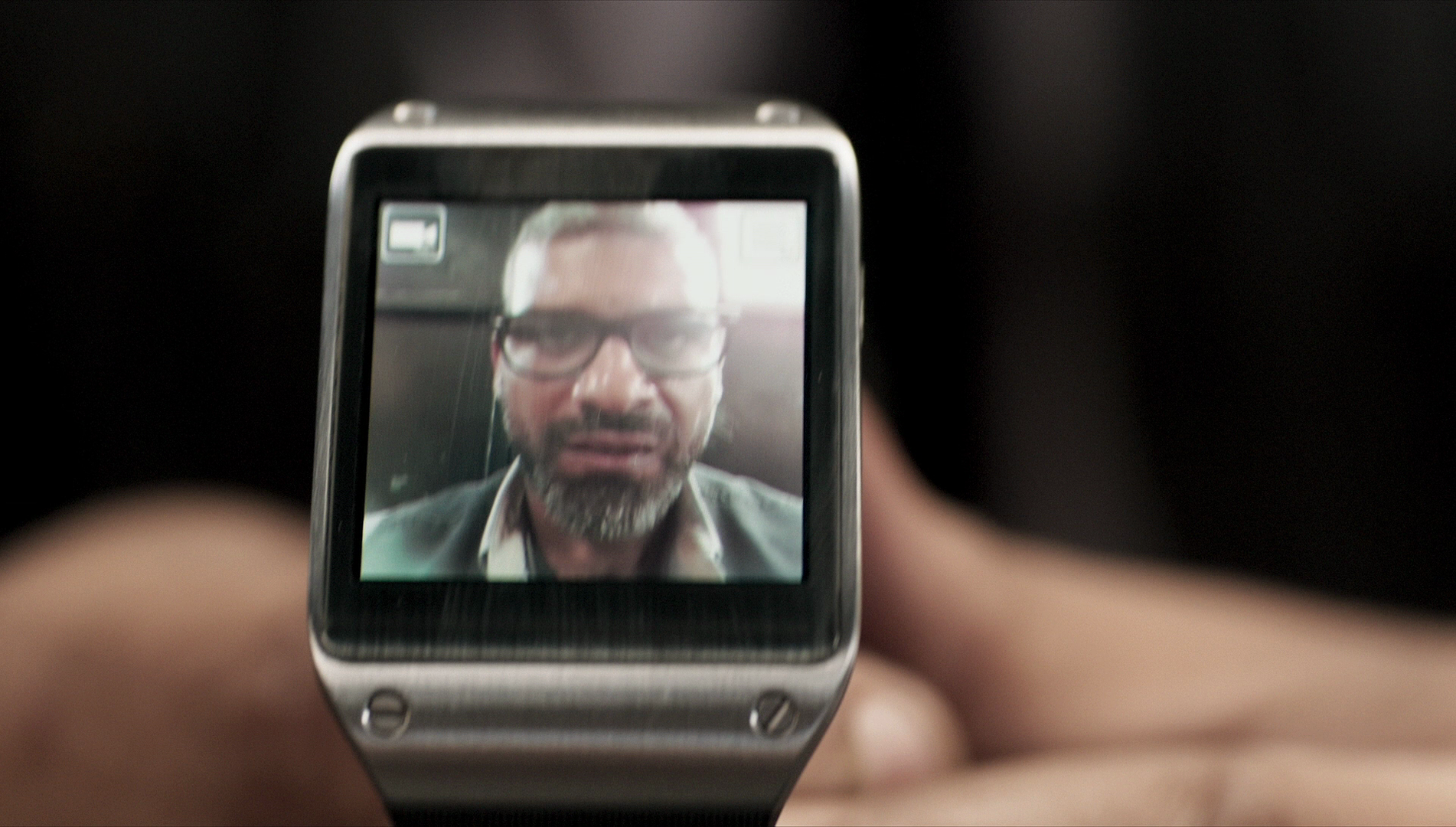 Within the film, the first people to be arrested and placed in the van are Egyptian-American journalist Adam Ramzy (Hani Adel) and his photographer Zein (El Sabaii Mohamed). They are soon joined by a number of pro-military demonstrators who, believing the van to contain Muslim Brotherhood supporters, pelt the vehicle with rocks. The police arrest several of these men and women, despite their protestations that they are not members of the MB and are in fact celebrating the toppling of Morsi’s regime; amongst their number are a family: Hossam (Tarek Abdel Aziz), his wife Nagwa (Nelly Karim) and their son Faris (Ahmed Dash). Not long afterwards, the van stops again and collects a number of Muslim Brotherhood supporters, including Dr Suhab, a high-ranking member of the MB who tells the MB protestors held in the van to get organised. (‘Is he your Michael Jackson?’, one of the pro-military supporters comments in reference to Suhab.) The Muslim Brotherhood group quickly defines itself into a closed rank of MB ‘members’, who huddle together in a corner in an attempt to devise a plan of action, and ‘mere’ supporters – who are disheartened at how the MB members cast them aside. The latter group includes a young woman, A’isha (May Elghety) and her elderly father – a family group which the film goes to great lengths to establish as a parallel to the pro-military family of Hossam, Nagwa and Faris. Within the film, the first people to be arrested and placed in the van are Egyptian-American journalist Adam Ramzy (Hani Adel) and his photographer Zein (El Sabaii Mohamed). They are soon joined by a number of pro-military demonstrators who, believing the van to contain Muslim Brotherhood supporters, pelt the vehicle with rocks. The police arrest several of these men and women, despite their protestations that they are not members of the MB and are in fact celebrating the toppling of Morsi’s regime; amongst their number are a family: Hossam (Tarek Abdel Aziz), his wife Nagwa (Nelly Karim) and their son Faris (Ahmed Dash). Not long afterwards, the van stops again and collects a number of Muslim Brotherhood supporters, including Dr Suhab, a high-ranking member of the MB who tells the MB protestors held in the van to get organised. (‘Is he your Michael Jackson?’, one of the pro-military supporters comments in reference to Suhab.) The Muslim Brotherhood group quickly defines itself into a closed rank of MB ‘members’, who huddle together in a corner in an attempt to devise a plan of action, and ‘mere’ supporters – who are disheartened at how the MB members cast them aside. The latter group includes a young woman, A’isha (May Elghety) and her elderly father – a family group which the film goes to great lengths to establish as a parallel to the pro-military family of Hossam, Nagwa and Faris.
In essence, Clash is very similar to Alfred Hitchcock’s Lifeboat (1944), in which British and American survivors of a U-boat attack on an Allied ship find themselves trapped on a lifeboat along with a German survivor who they believe to the captain of the U-boat. Inevitably, as one might expect from a narrative with such similarities to Lifeboat, at the start of their journey in the van the various groups focus on their differences, but their shared experiences of terror (when the van is attacked by MB members and the police retaliate by firing teargas cannisters which land near the van) encourage them to overcome their cultural and ideological differences and a certain amount of sympathy develops between the factions – so they treat one another kindly, the nurse Nagwa tending to the wounds of various injured parties and Muslim Brotherhood supporter A’isha reacting with good humour when Nagwa jokes that she will call her ‘Aisha’ because she (Nagwa) isn’t comfortable using old Islamic names. The two young people in the van, A’isha and Faris, are drawn together by a game of noughts and crosses they play on one of the van’s interior walls. ‘We play army and MB at school’, Faris tells A’isha. ‘So do we’, she responds. ‘When we play, we execute the MB’, Faris says. ‘When we play, we slaughter the army’, A’isha tells him. 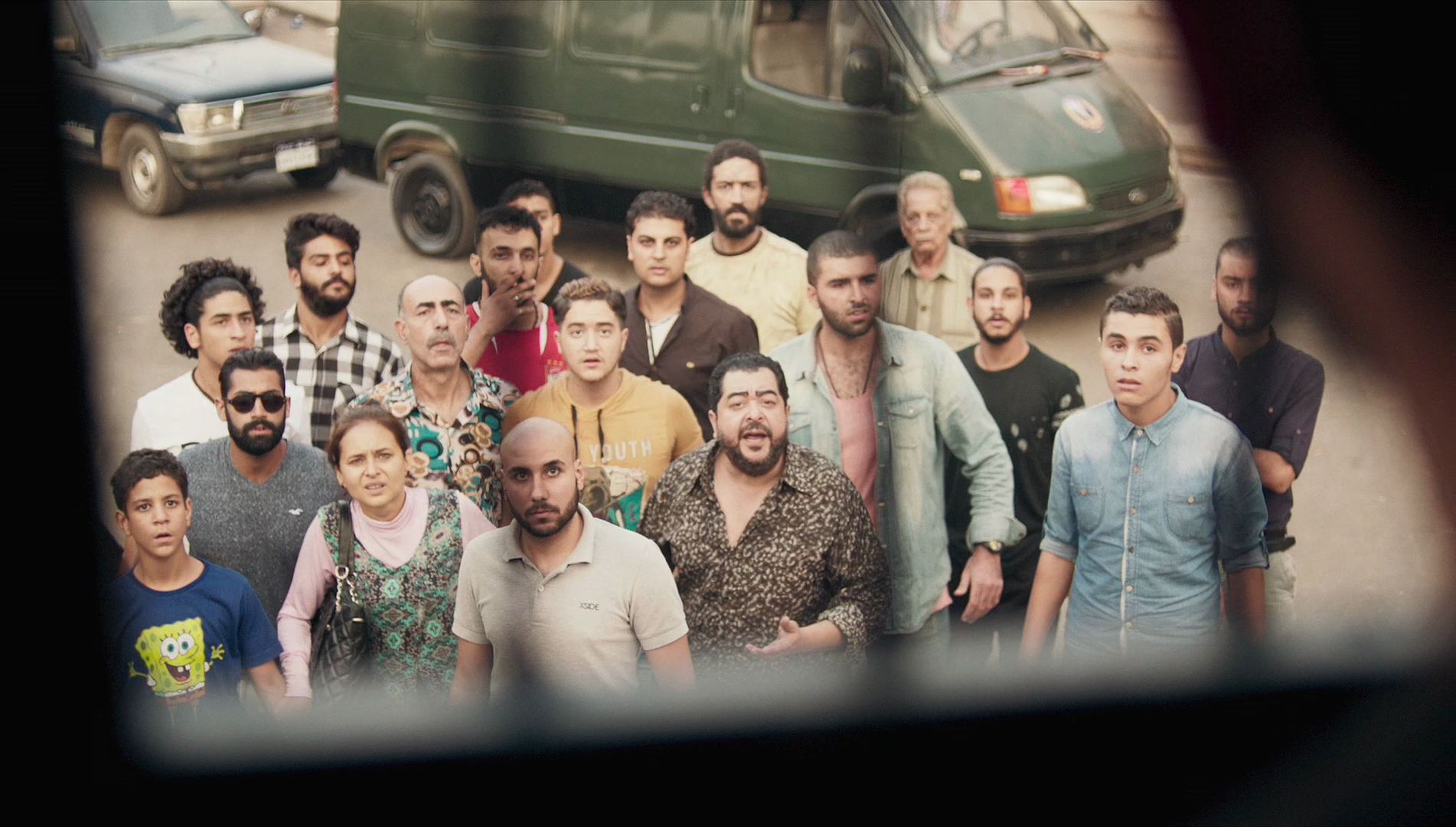 The film balances dialogue within the police van, within and amongst the various factions (journalists, pro-military supporters and members and supporters of the Muslim Brotherhood), with moments that serve to remind the viewer of the tensions outside the van (and, by extension, how the conflicts in the van are metonymic of wider tensions). ‘Are you with us?’, a Muslim Brotherhood member asks Adam at one point in the film. ‘No’, Adam replies. ‘Then you’re with them’, the MB member asserts. ‘So everybody’s either with you or them?’, Zein responds angrily. Periodically, conversations will be disrupted by explosions outside the vehicle, following which the van is sometimes attacked by either the Muslim Brotherhood or pro-military supporters. From inside the van, these groups are indistinguishable other than by their chants (the cry of the Muslim Brotherhood is ‘Islam will prevail!’). This confusion over which line of demonstrators the van is crossing forms a key part of the film’s climax, in which the vehicle is commandeered by one of the Muslim Brotherhood supporters and driven to what he believes to be the front-line of the MB demonstrators. However, as the van reaches the point of no return, he realises that the demonstrators are not MB supporters but are instead pro-military demonstrators. Tension is also amplified by references to the deaths of thirty-seven detainees in a similar van a number of days earlier. Part-way through the film, another van containing protestors is shown near to the vehicle on which the narrative focuses. The prisoners shout to one another; the detainees in the other vehicle are packed in so tightly under the unbearable noon sun that they are suffering from a lack of oxygen. One of the prisoners in the other van dies – he is the elderly father of one of the MB protestors in the vehicle in which the film is set. The film balances dialogue within the police van, within and amongst the various factions (journalists, pro-military supporters and members and supporters of the Muslim Brotherhood), with moments that serve to remind the viewer of the tensions outside the van (and, by extension, how the conflicts in the van are metonymic of wider tensions). ‘Are you with us?’, a Muslim Brotherhood member asks Adam at one point in the film. ‘No’, Adam replies. ‘Then you’re with them’, the MB member asserts. ‘So everybody’s either with you or them?’, Zein responds angrily. Periodically, conversations will be disrupted by explosions outside the vehicle, following which the van is sometimes attacked by either the Muslim Brotherhood or pro-military supporters. From inside the van, these groups are indistinguishable other than by their chants (the cry of the Muslim Brotherhood is ‘Islam will prevail!’). This confusion over which line of demonstrators the van is crossing forms a key part of the film’s climax, in which the vehicle is commandeered by one of the Muslim Brotherhood supporters and driven to what he believes to be the front-line of the MB demonstrators. However, as the van reaches the point of no return, he realises that the demonstrators are not MB supporters but are instead pro-military demonstrators. Tension is also amplified by references to the deaths of thirty-seven detainees in a similar van a number of days earlier. Part-way through the film, another van containing protestors is shown near to the vehicle on which the narrative focuses. The prisoners shout to one another; the detainees in the other vehicle are packed in so tightly under the unbearable noon sun that they are suffering from a lack of oxygen. One of the prisoners in the other van dies – he is the elderly father of one of the MB protestors in the vehicle in which the film is set.
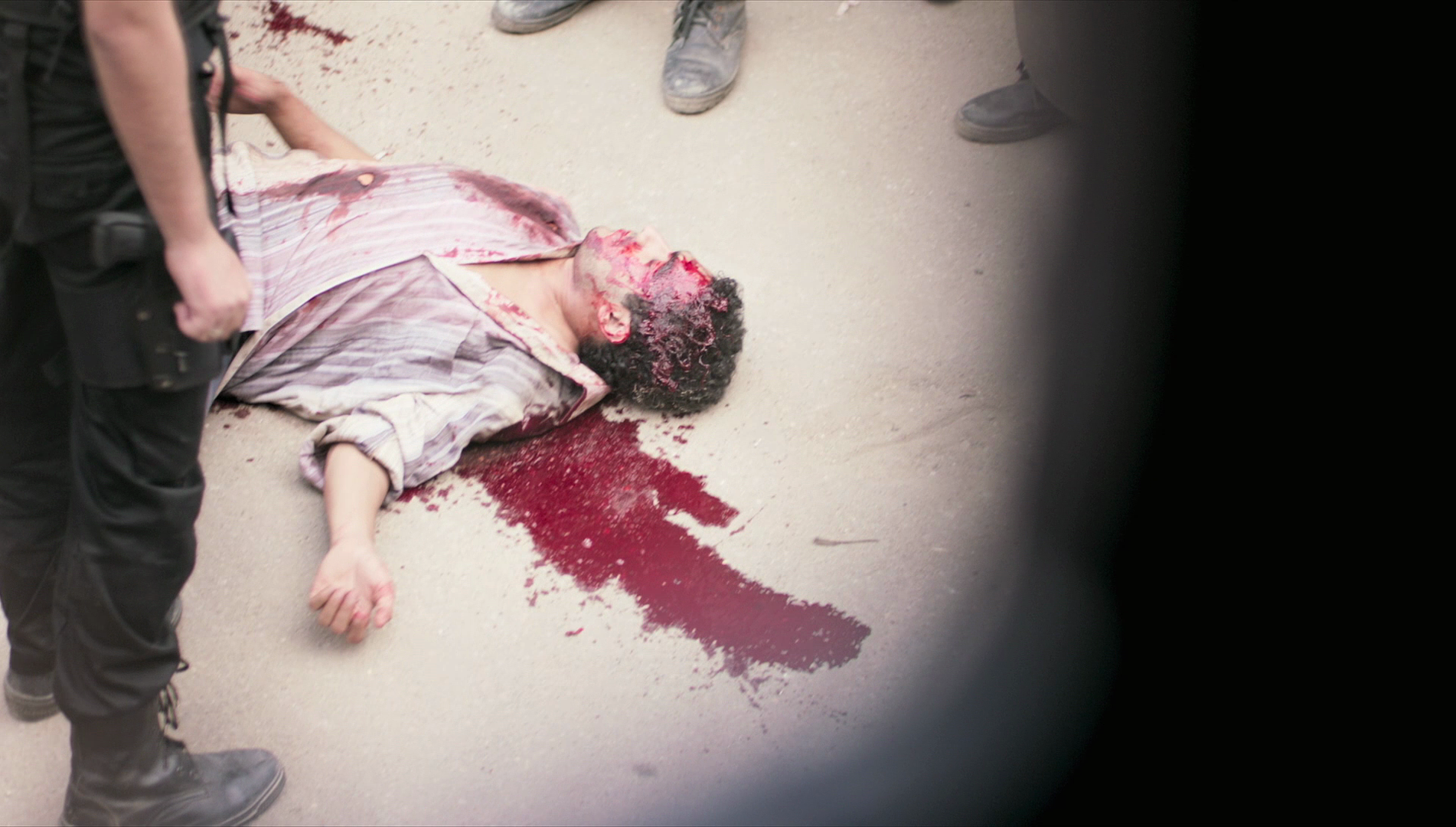 The dialogue is sometimes a little blunt and clumsy, at least in the translation in the English subtitles: ‘Today I’m out to cover news, not be the news’, Zein declares when some of the pro-military protestors assert that he and Adam must be spies for the Muslim Brotherhood. Later, the police officer in charge of the captives tells Adam, ‘Think being an American shields you? America is behind this mess’. Later, Adam reflects on the experiences of those who have left their home culture. He is asked by one of the MB protestors ‘What does America look like? Is it all buildings?’ ‘There are trees everywhere; lots of greenery’, Adam replies. ‘What brought you back to this dump?’, another of the protestors queries. ‘Growing up, my dad would get mad at the mere mention of Egypt’, Adam says, ‘He’d say it’s hell on earth. He’d talk about being tortured in the Nasser era and rant about the chaos and corruption. Despite all that, his dying wish was to be buried here’. The dialogue is sometimes a little blunt and clumsy, at least in the translation in the English subtitles: ‘Today I’m out to cover news, not be the news’, Zein declares when some of the pro-military protestors assert that he and Adam must be spies for the Muslim Brotherhood. Later, the police officer in charge of the captives tells Adam, ‘Think being an American shields you? America is behind this mess’. Later, Adam reflects on the experiences of those who have left their home culture. He is asked by one of the MB protestors ‘What does America look like? Is it all buildings?’ ‘There are trees everywhere; lots of greenery’, Adam replies. ‘What brought you back to this dump?’, another of the protestors queries. ‘Growing up, my dad would get mad at the mere mention of Egypt’, Adam says, ‘He’d say it’s hell on earth. He’d talk about being tortured in the Nasser era and rant about the chaos and corruption. Despite all that, his dying wish was to be buried here’.
When it erupts, violence is abrupt and brutal. Unexpectedly, a police lieutenant is shot by a Muslim Brotherhood sniper who sprays the van with gunfire from an AK-47, also shooting the police driver of the vehicle. The gunman is soon caught and beaten brutally, apparently killed, by the police officers. The body is left in the street, receding into the distance as the van pulls away from the scene. Violence begets violence, leading to a particularly tense and bleak conclusion. 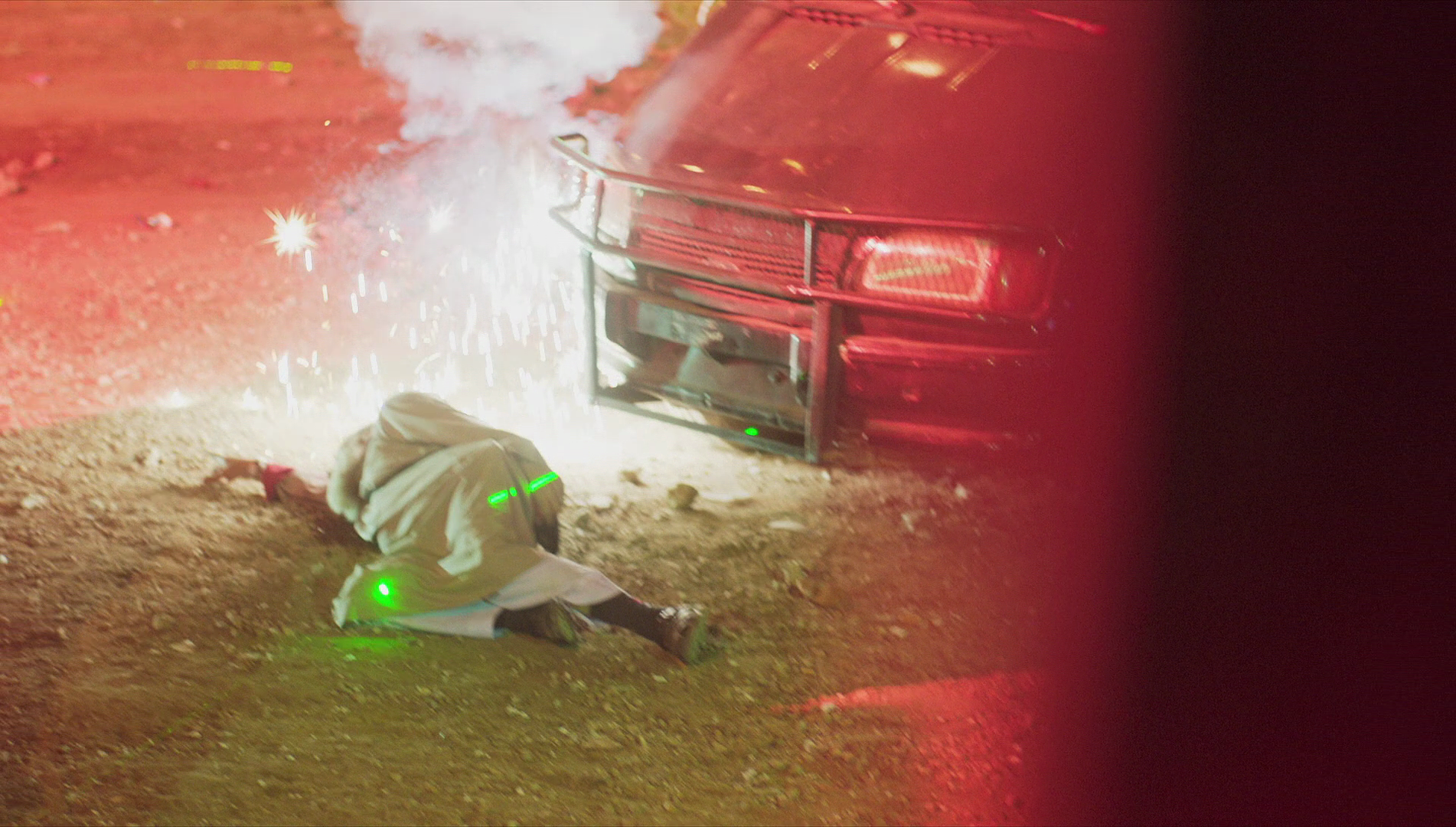 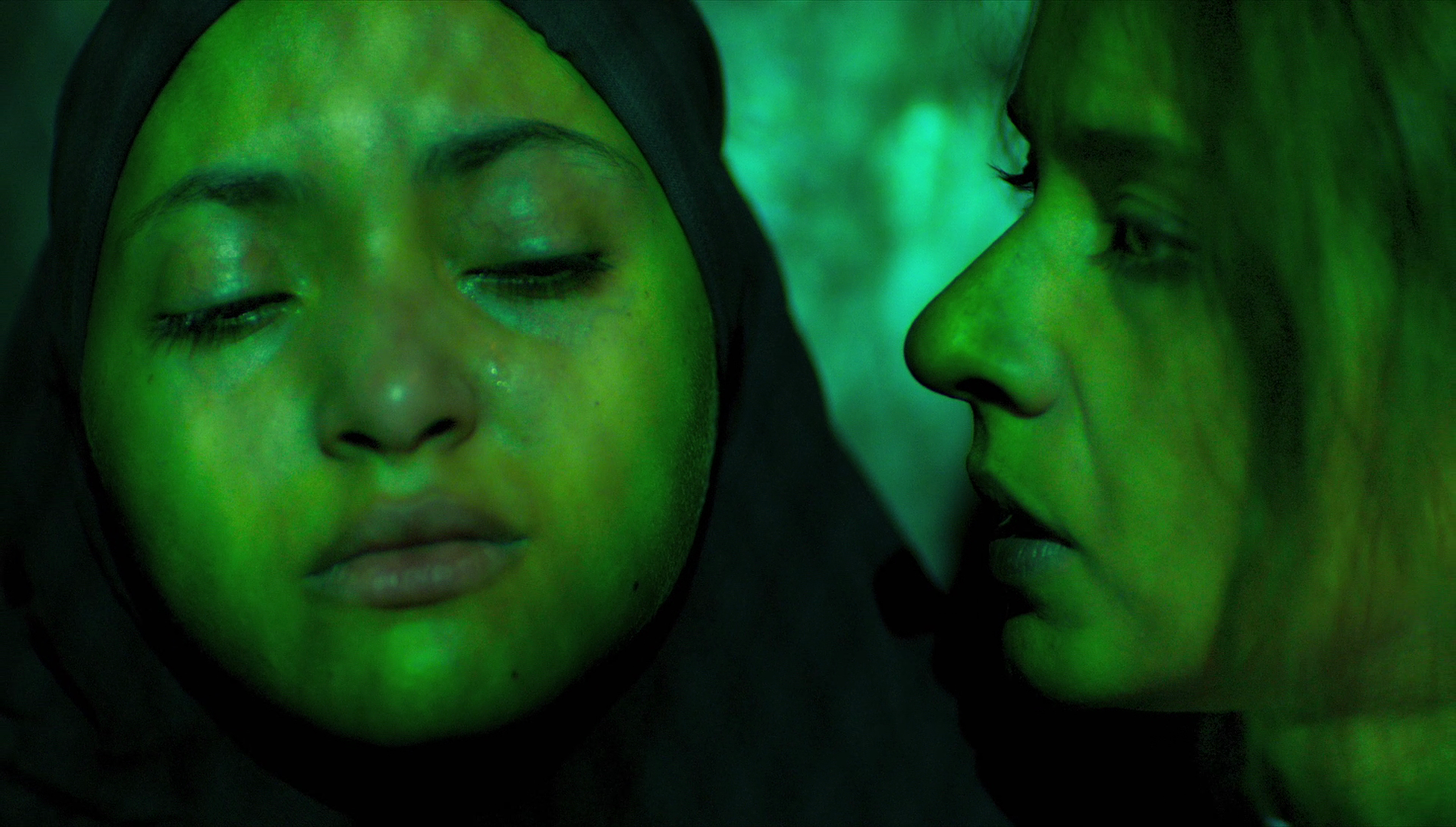 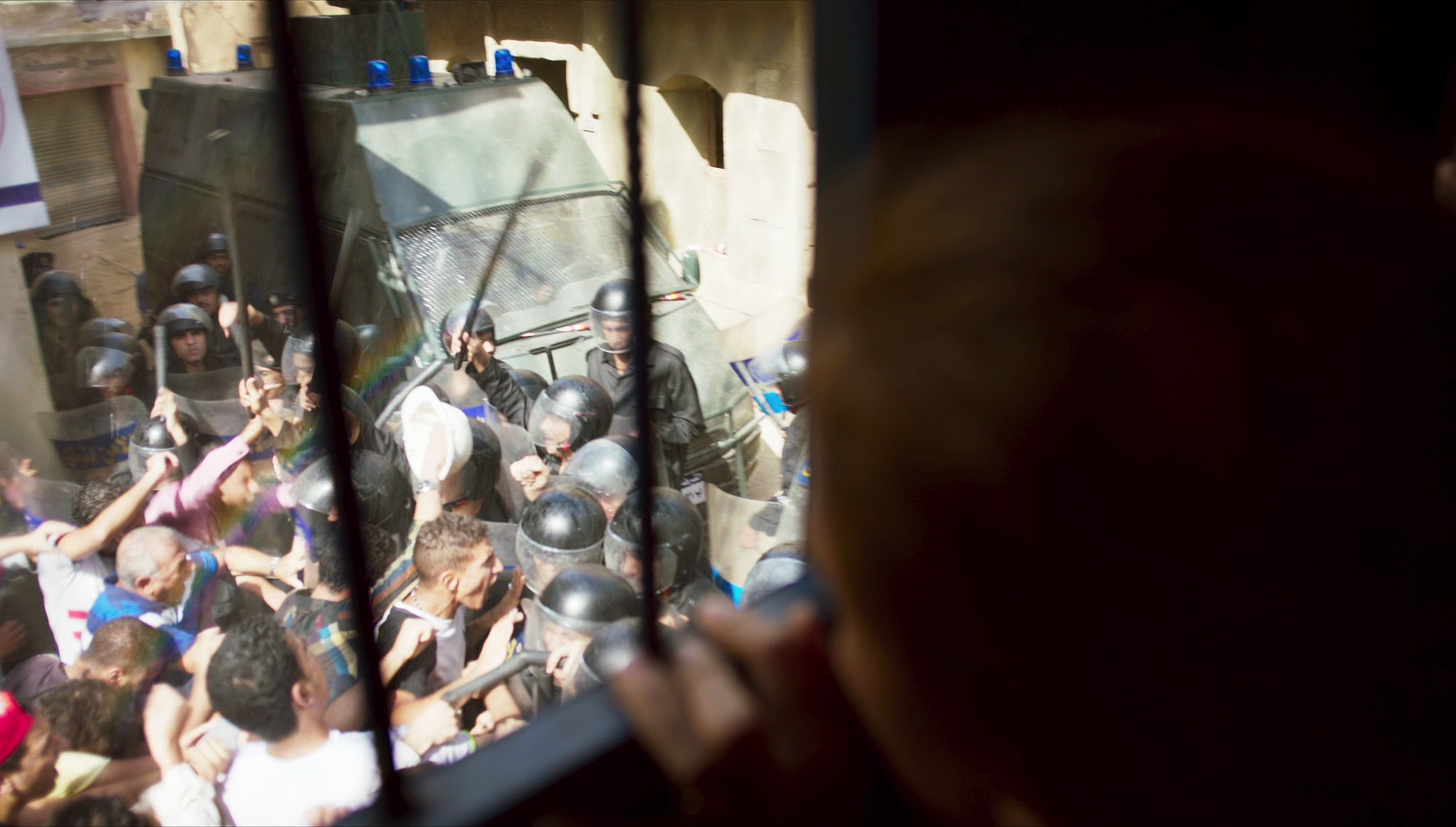
Video
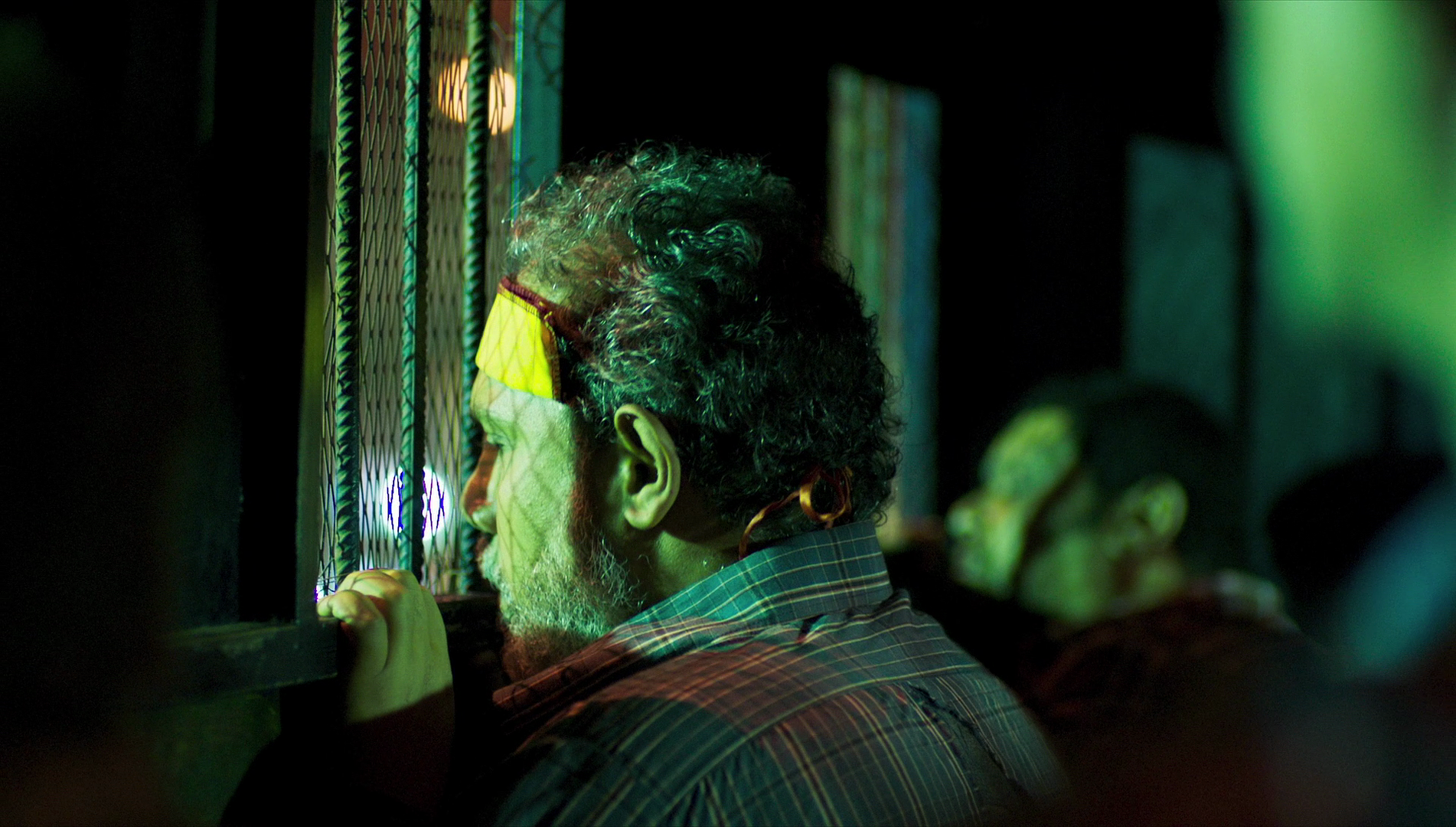 Clash was shot digitally, and is presented here in a 1080p transfer that uses the AVC codec and takes up a little over 23Gb of space on the Blu-ray disc. The film is uncut and runs for 94:18; the presentation is in the 1.78:1 ratio. Clash was shot digitally, and is presented here in a 1080p transfer that uses the AVC codec and takes up a little over 23Gb of space on the Blu-ray disc. The film is uncut and runs for 94:18; the presentation is in the 1.78:1 ratio.
The film uses the digital photography to add a sense of photojournalistic verisimilitude, exploiting the compressed dynamic range of digital photography (in comparison with film photography). As noted above, the whole film takes place inside the van. Exposure is balanced for this interior space; when the characters look through the windows of the vehicle at the events unfolding outside in the streets of Cairo, the camera shares their limited gaze and, accordingly, images are often blown out as if to simulate the effect of being partially blinded by the sunlight. This photographic technique helps to create a sense of dislocation between the interior and the exterior of the vehicle. An excellent level of detail is present within this presentation. Exposure is balanced for the inside of the vehicle, meaning that when the camera looks with the characters through the windows of the van at the world outside, highlights are often blown. This is an intentional effect, however, and aside from this contrast is very pleasing with balanced, defined midtones and shadow detail present. This presentation is, obviously, a digital clone of a digital source and looks excellent throughout. Compression is fine, with no problematic artifacts or anything of that sort. 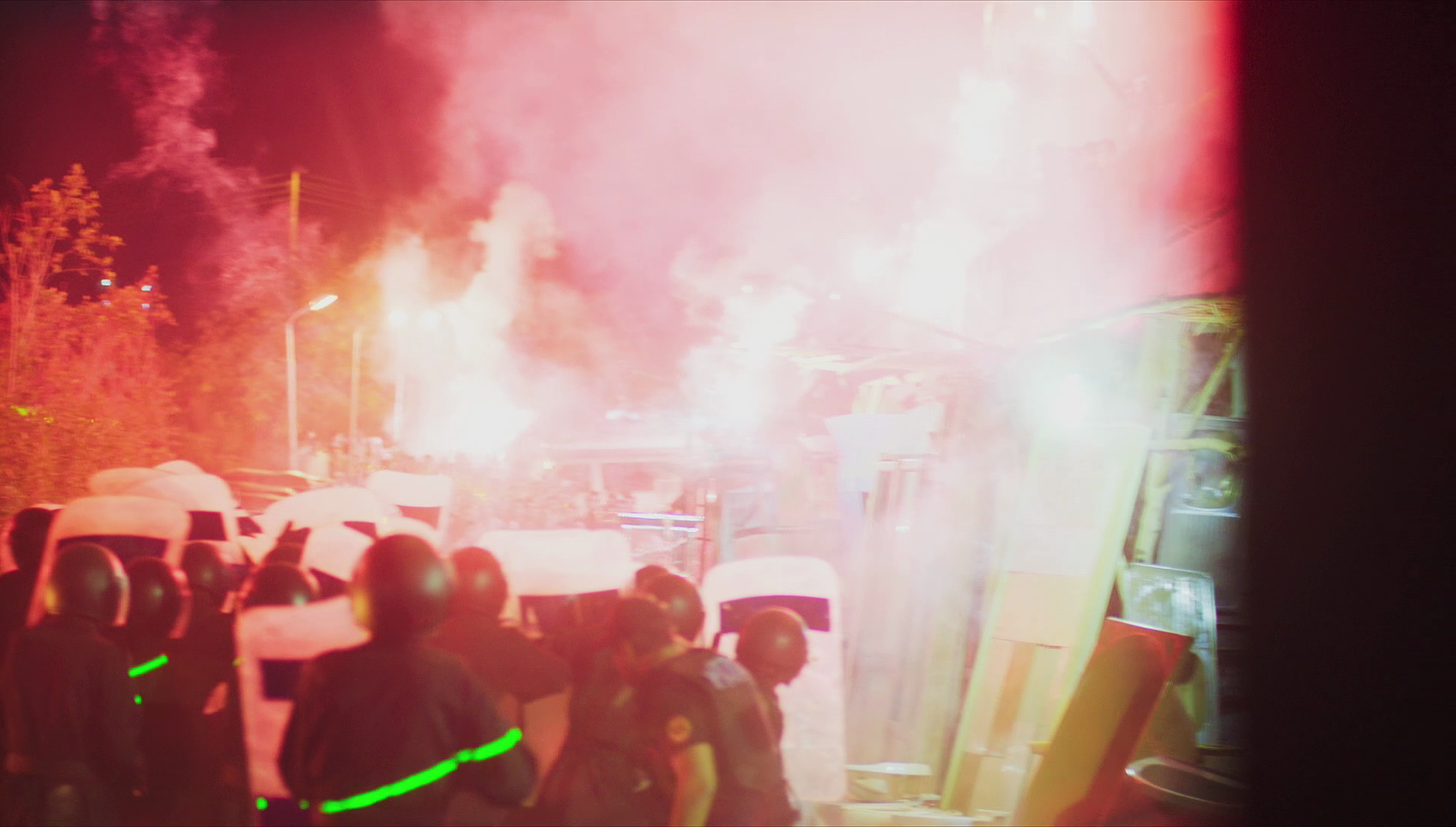 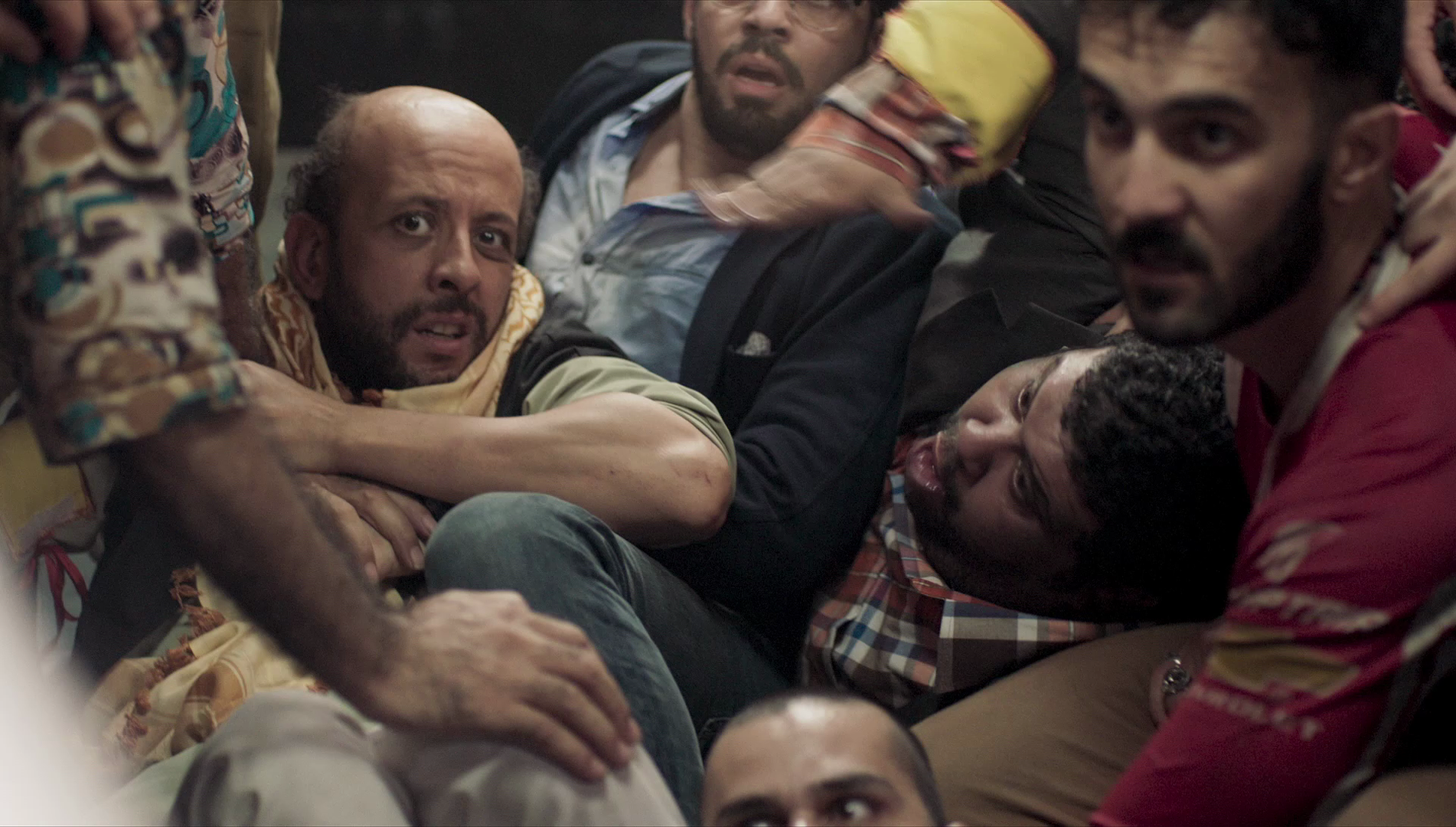 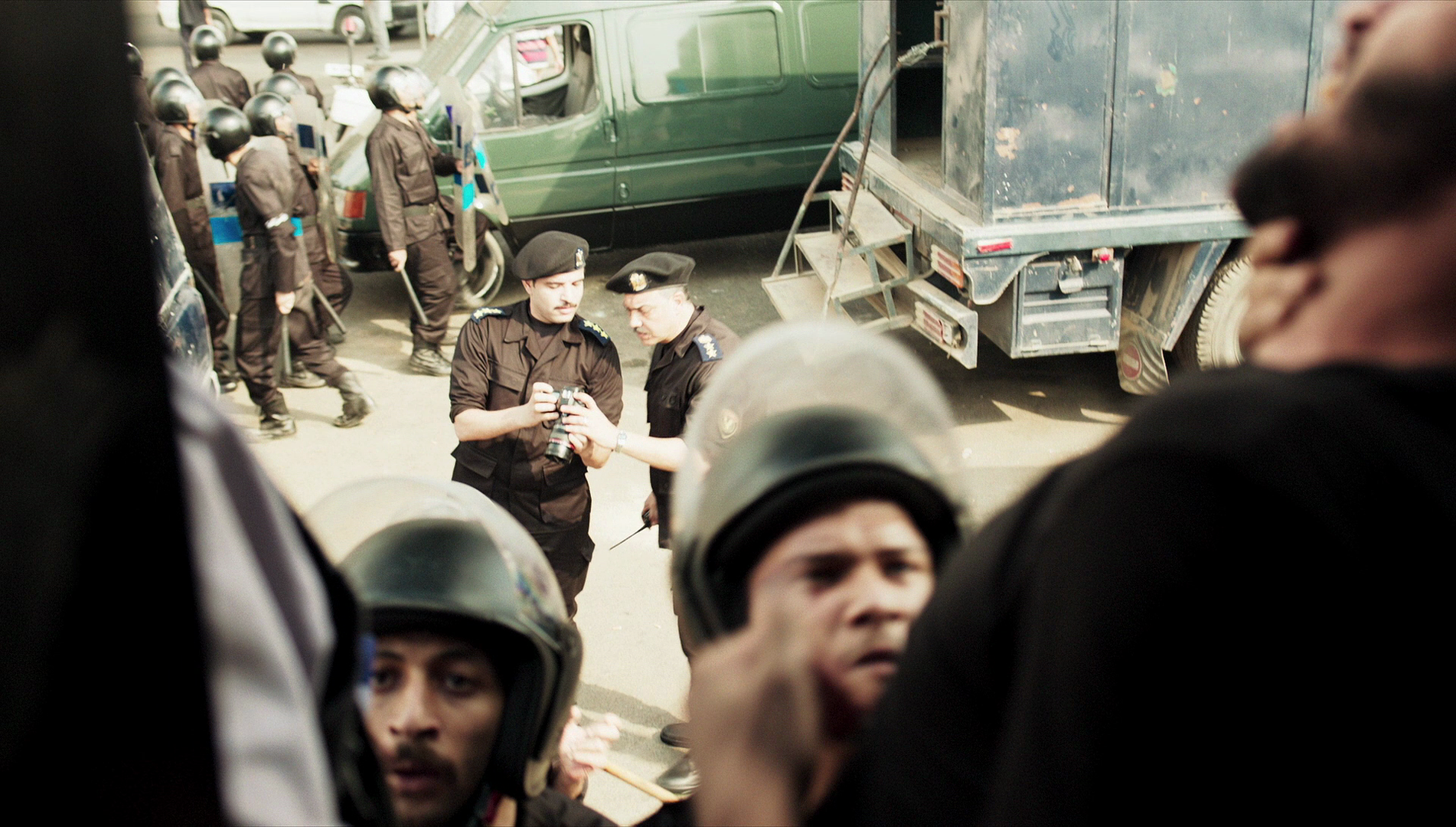
Audio
Audio is presented via a DTS-HD MA 5.1 track, which is predominantly in Arabic but with some English dialogue. Optional English subtitles are provided for the dialogue which isn’t in English. The audio track is fine: dialogue is always clear, and the sound separation is used effectively in terms of separating the various spaces within the van but also in foregrounding the moments in which violence erupts – when gunfire breaks out or explosions can be heard, for example. The English subtitles are easy to read and free from grammatical errors. An optional LPCM 2.0 audio descriptive track is also provided.
Extras
The disc includes: - Tales from the Van (42:59). Recorded at the London premiere of the film in late 2016, this interview with Mohamed Diab sees the director reflecting on the origins of the film and discussing its immediate social and historical context in terms of the cultural and political turmoil in Egypt. The interview is in English. - A making of featurette (18:22). Presented in the 2.35:1 ratio, this featurette offers behind-the-scenes glimpses of the production of the film interspersed with interviews with the cast and crew. The interviews are in Arabic, with optional English subtitles. - The film’s trailer (1:33).
Overall
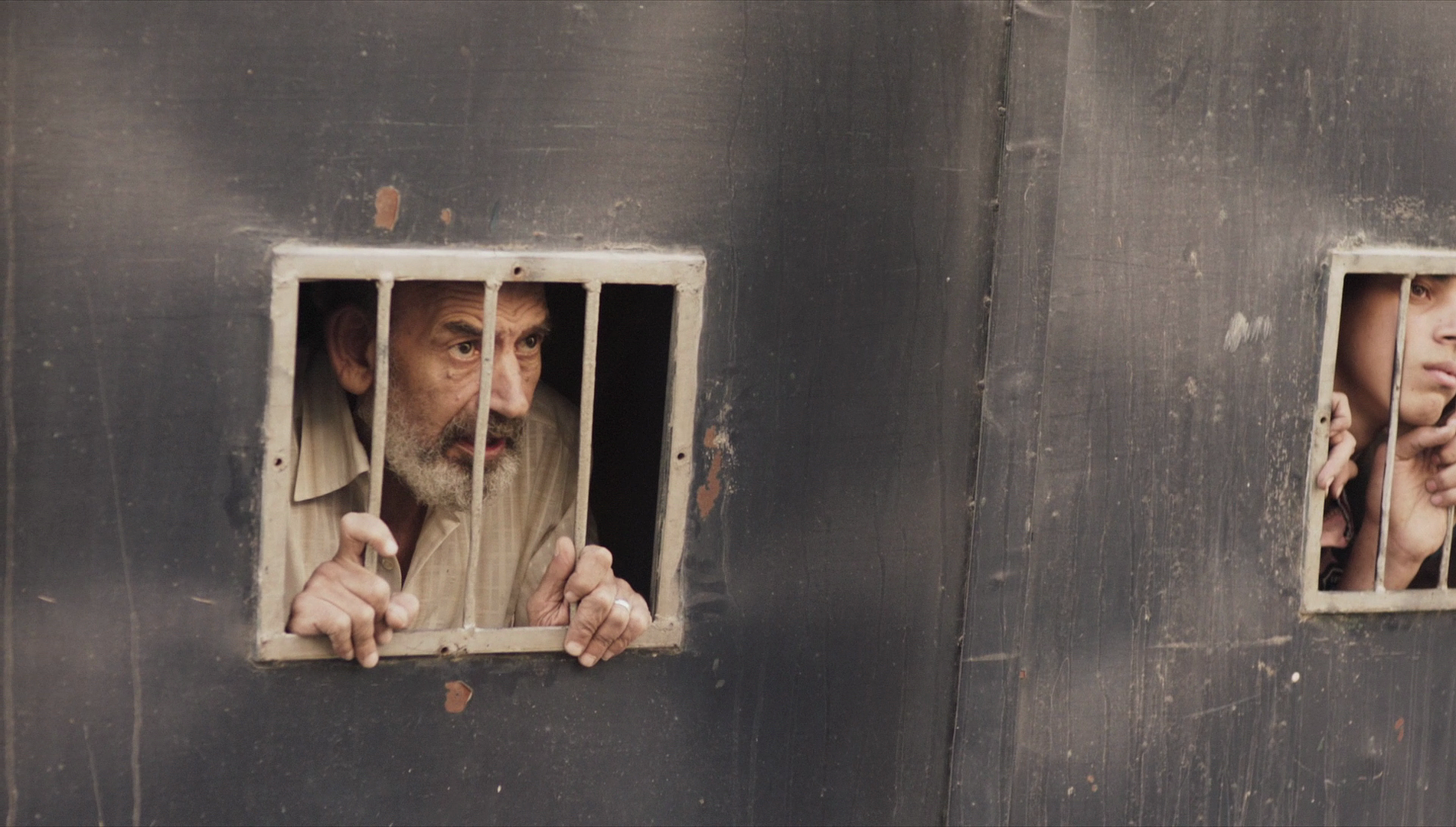 A potent film, Clash has received some highly justifiable praise for its sense of objectivity and humanism: in its depiction of the 2013 military coup, the film refuses to paint either side as at fault. Rather, the threat comes from the mob mentality of the demonstrators and the escalating sense of violence that threatens to engulf the protagonists in the van – who, despite their cultural and ideological differences, manage to achieve a sense of community as the narrative progresses. The model for this picture seems quite clearly to be Hitchcock’s Lifeboat, though more immediate exemplars (notably, Samuel Moaz’s 2009 film Lebanon) have been cited by the director as influences upon Clash. However, in its depiction of a small group of disparate people who are forced to band together against an external threat, comparisons may also be made with George A Romero’s Night of the Living Dead (1968), especially in the imagery at the film’s climax, where the grasping hands of protestors outside the van pull characters from the vehicle to their certain death. A potent film, Clash has received some highly justifiable praise for its sense of objectivity and humanism: in its depiction of the 2013 military coup, the film refuses to paint either side as at fault. Rather, the threat comes from the mob mentality of the demonstrators and the escalating sense of violence that threatens to engulf the protagonists in the van – who, despite their cultural and ideological differences, manage to achieve a sense of community as the narrative progresses. The model for this picture seems quite clearly to be Hitchcock’s Lifeboat, though more immediate exemplars (notably, Samuel Moaz’s 2009 film Lebanon) have been cited by the director as influences upon Clash. However, in its depiction of a small group of disparate people who are forced to band together against an external threat, comparisons may also be made with George A Romero’s Night of the Living Dead (1968), especially in the imagery at the film’s climax, where the grasping hands of protestors outside the van pull characters from the vehicle to their certain death.
Arrow’s Blu-ray presentation of the film is excellent and would seem to be true to the (digital) source. It is also accompanied by some very good contextual material: in particular, the extended interview with Diab is particularly illuminating. This really is a splendid film, and Arrow’s release is deeply satisfying. 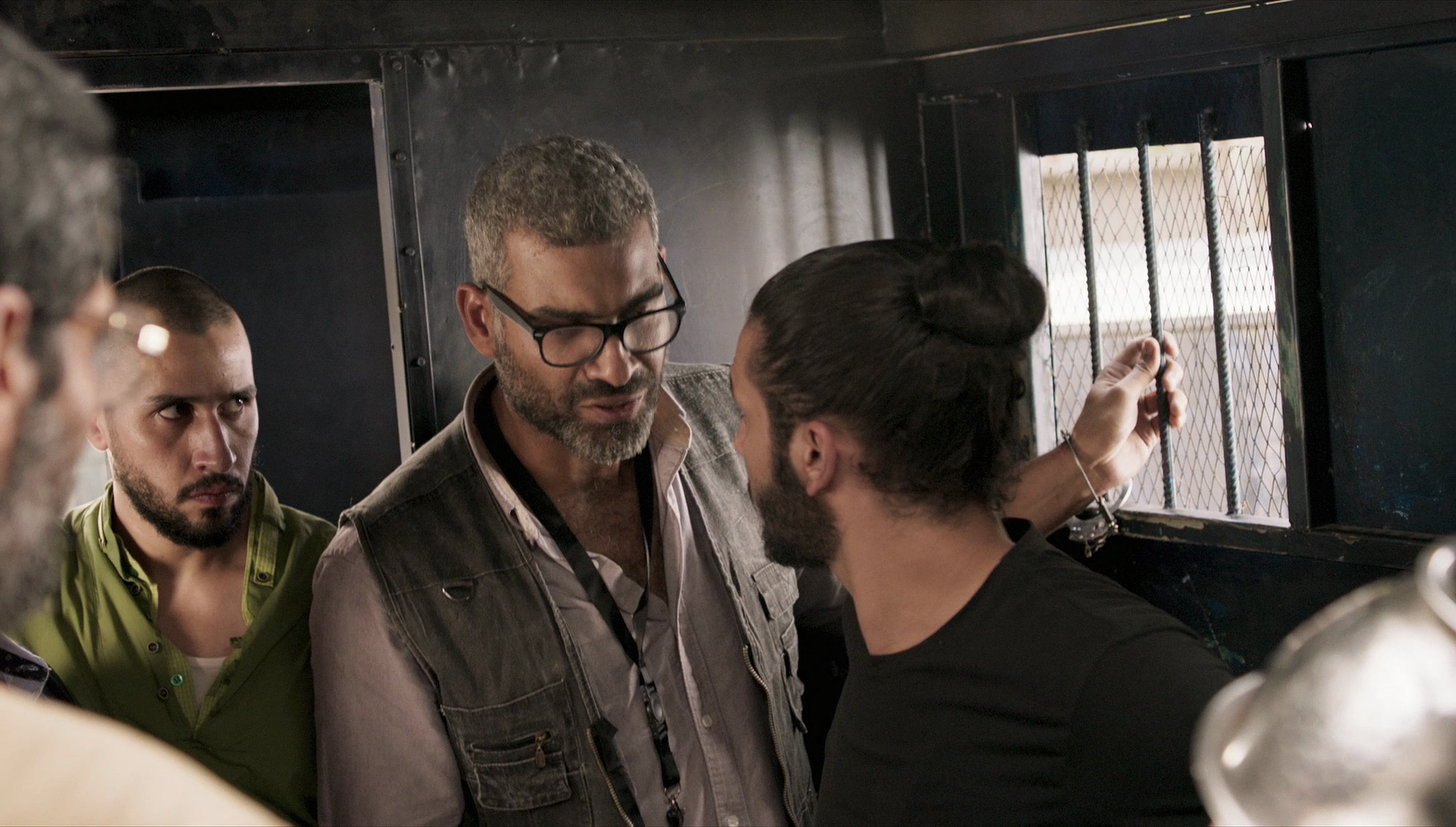
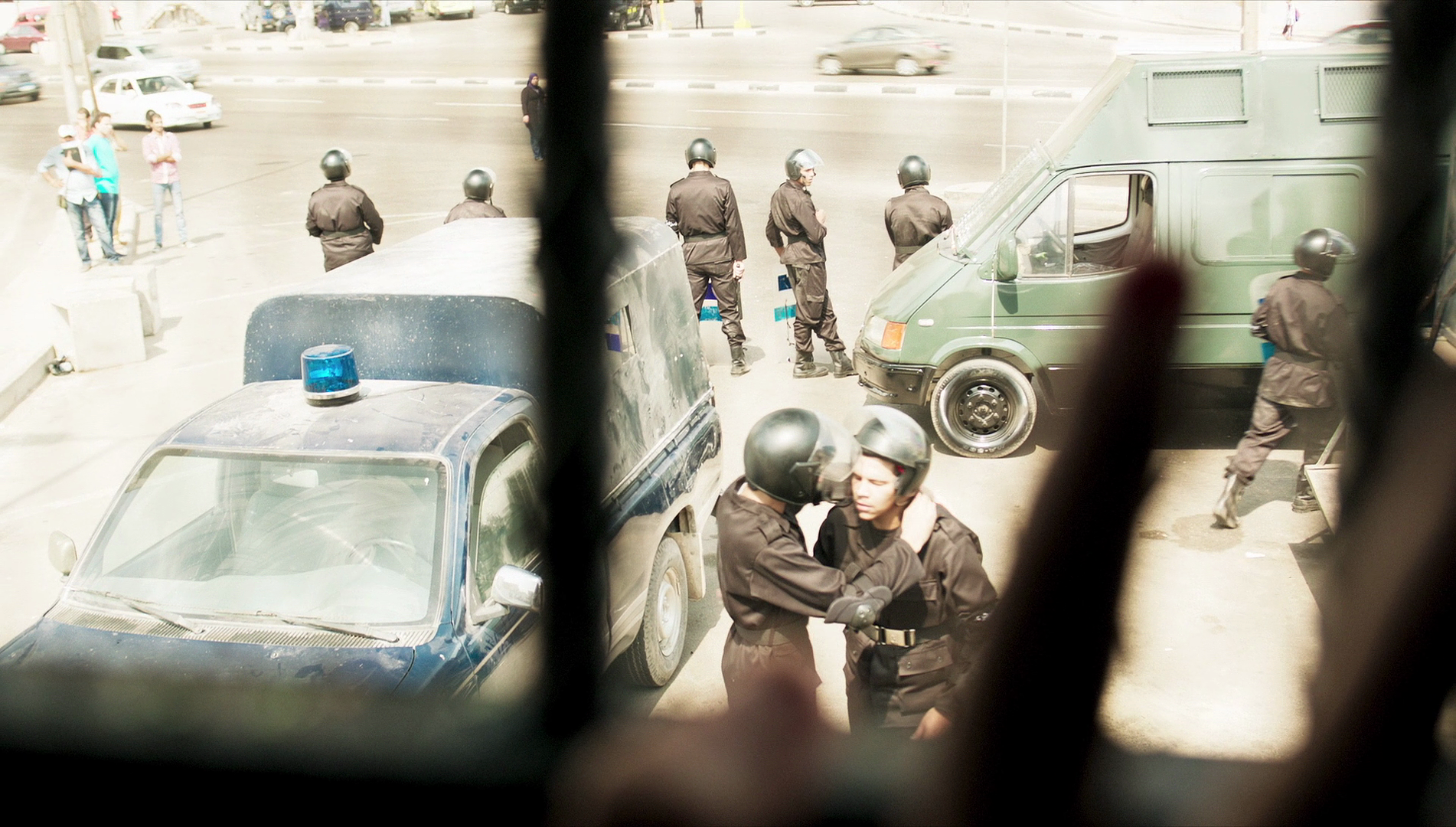
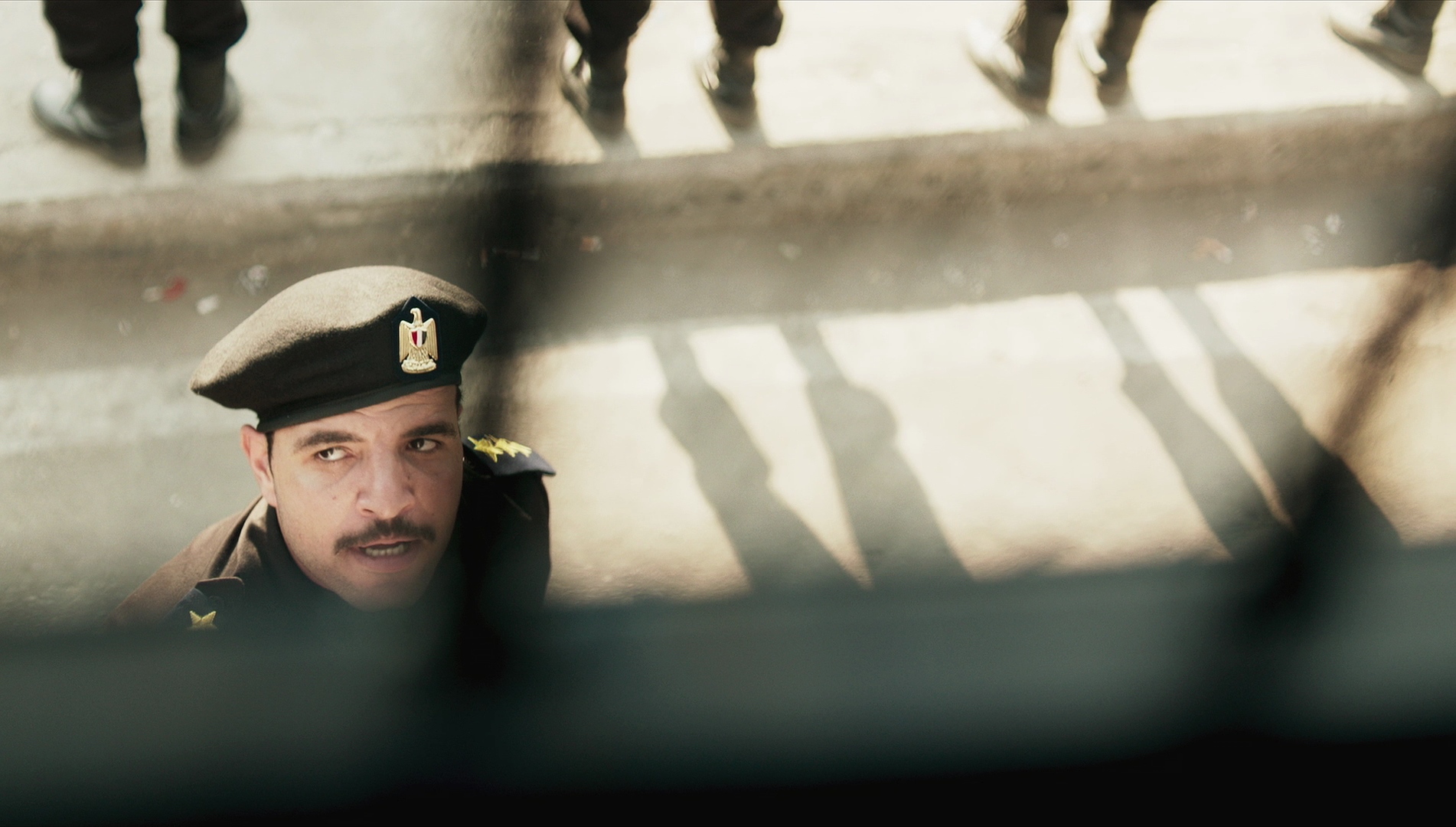
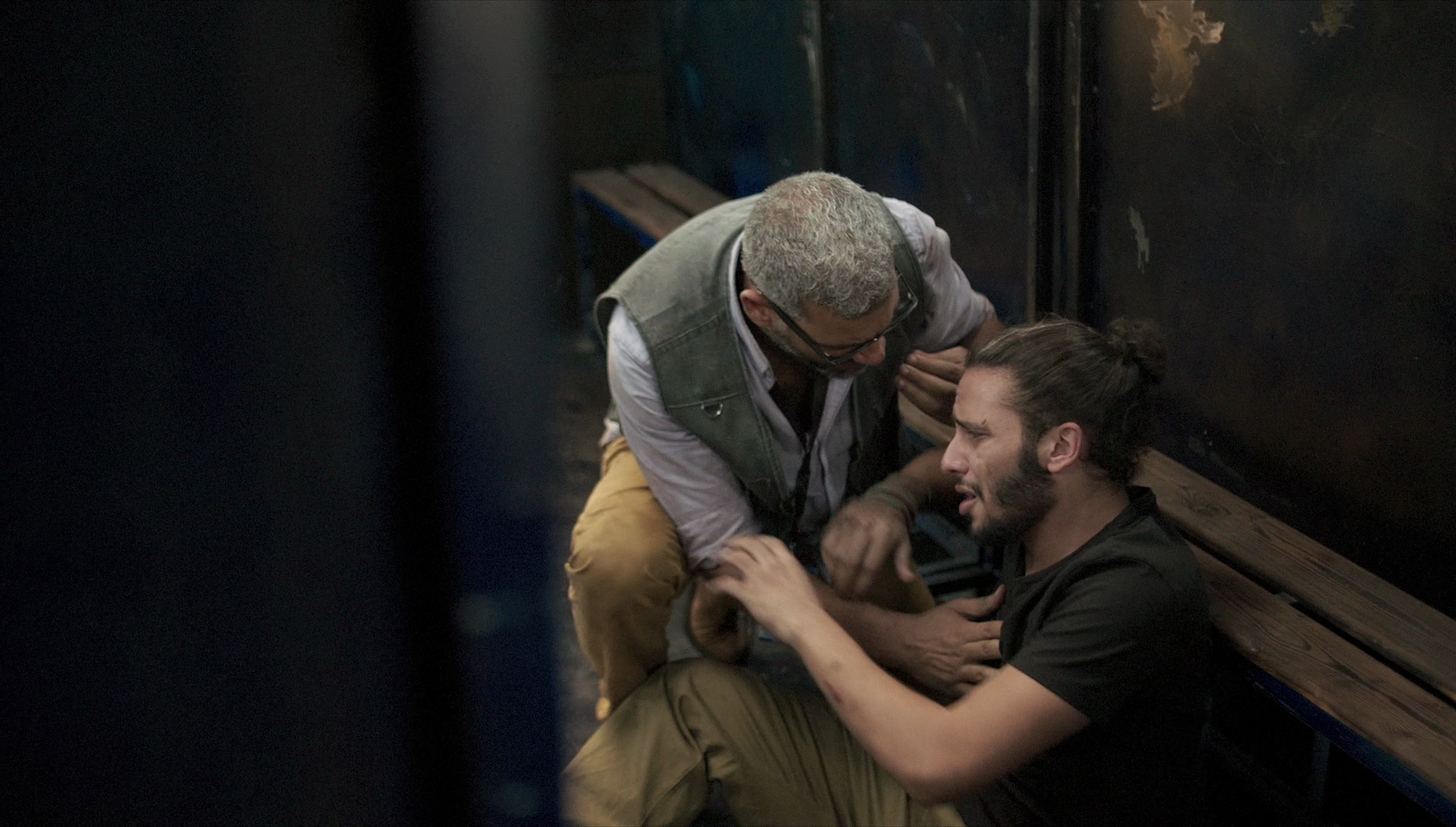
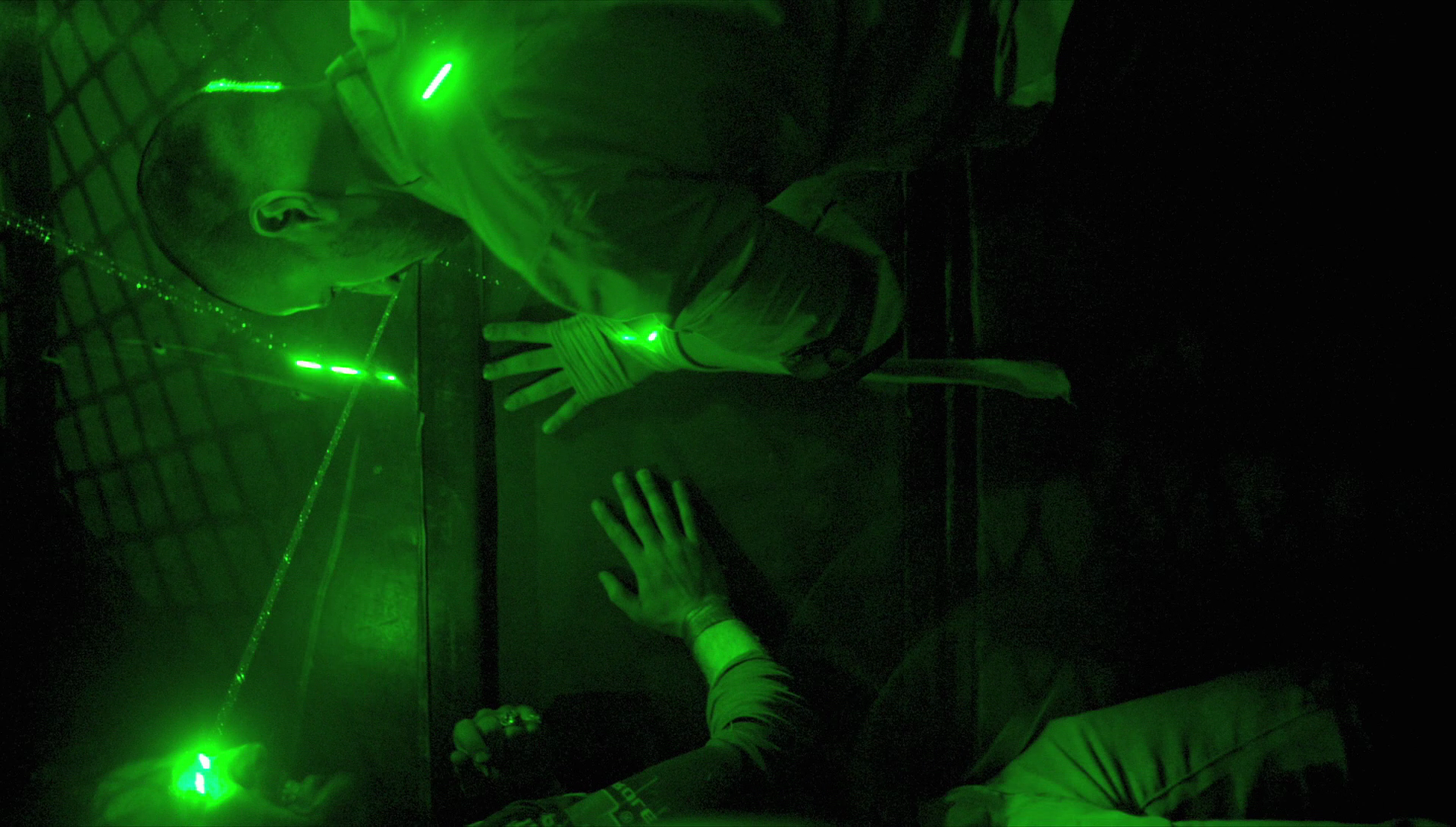

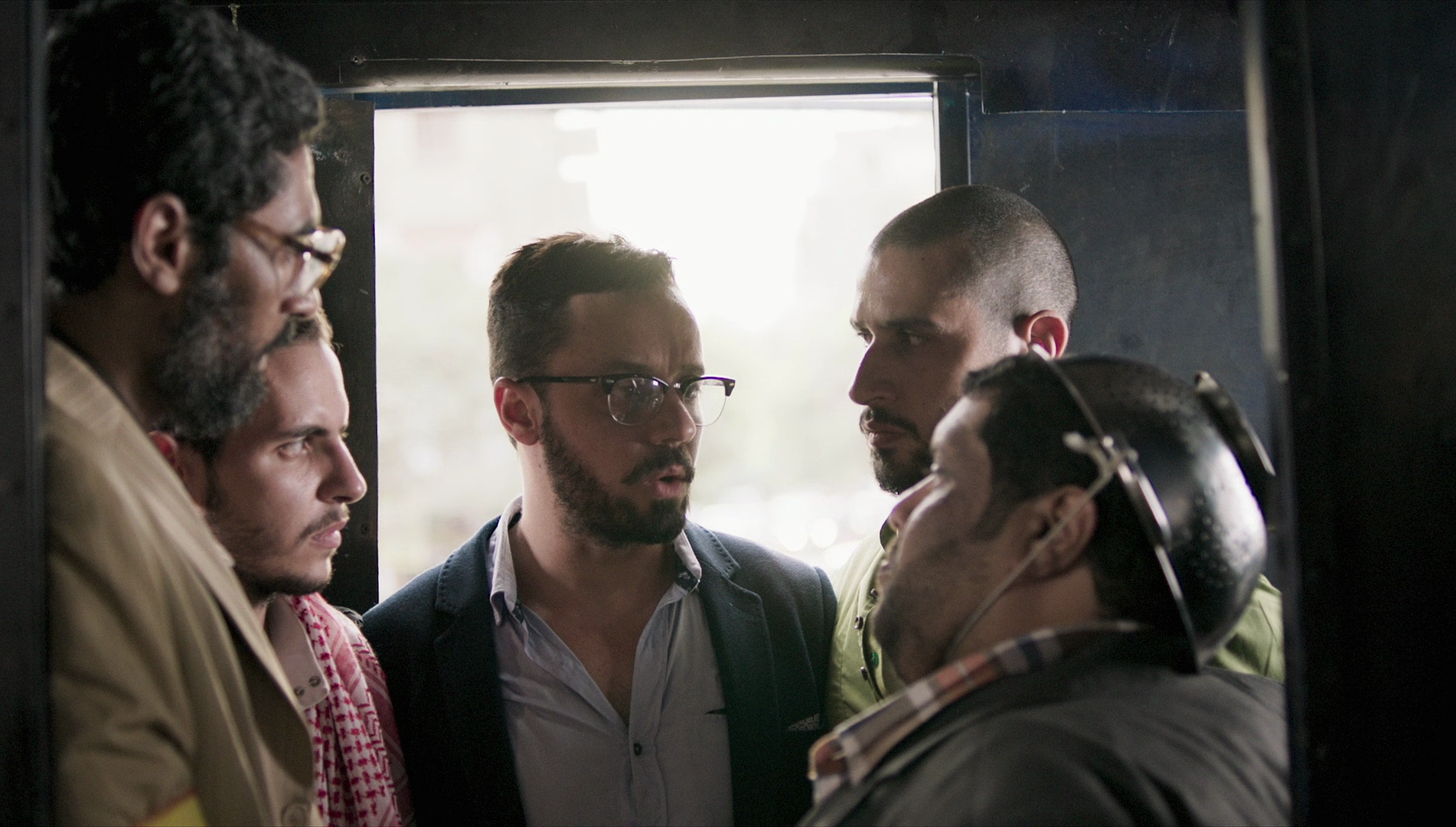
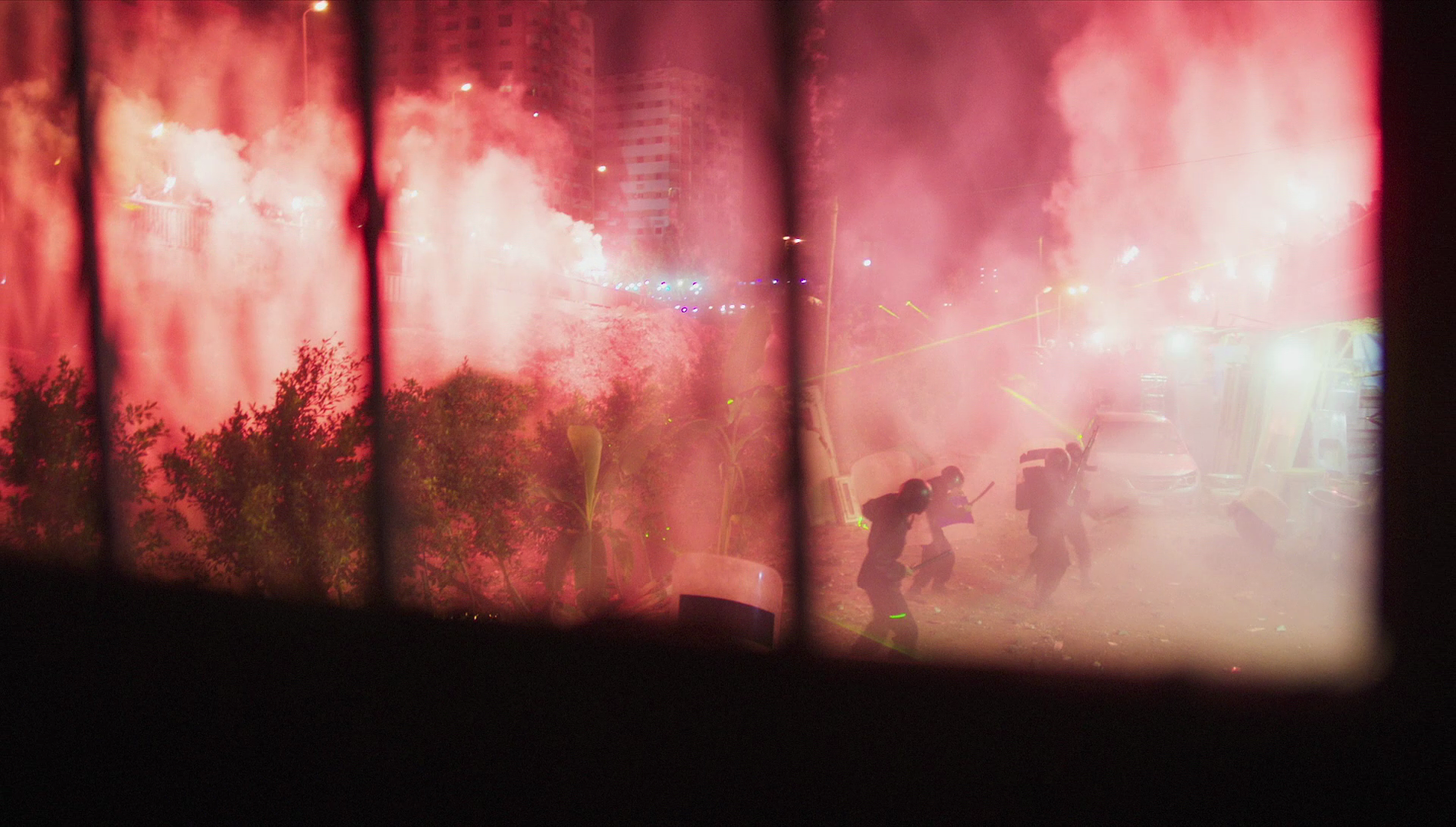
|
|||||

|